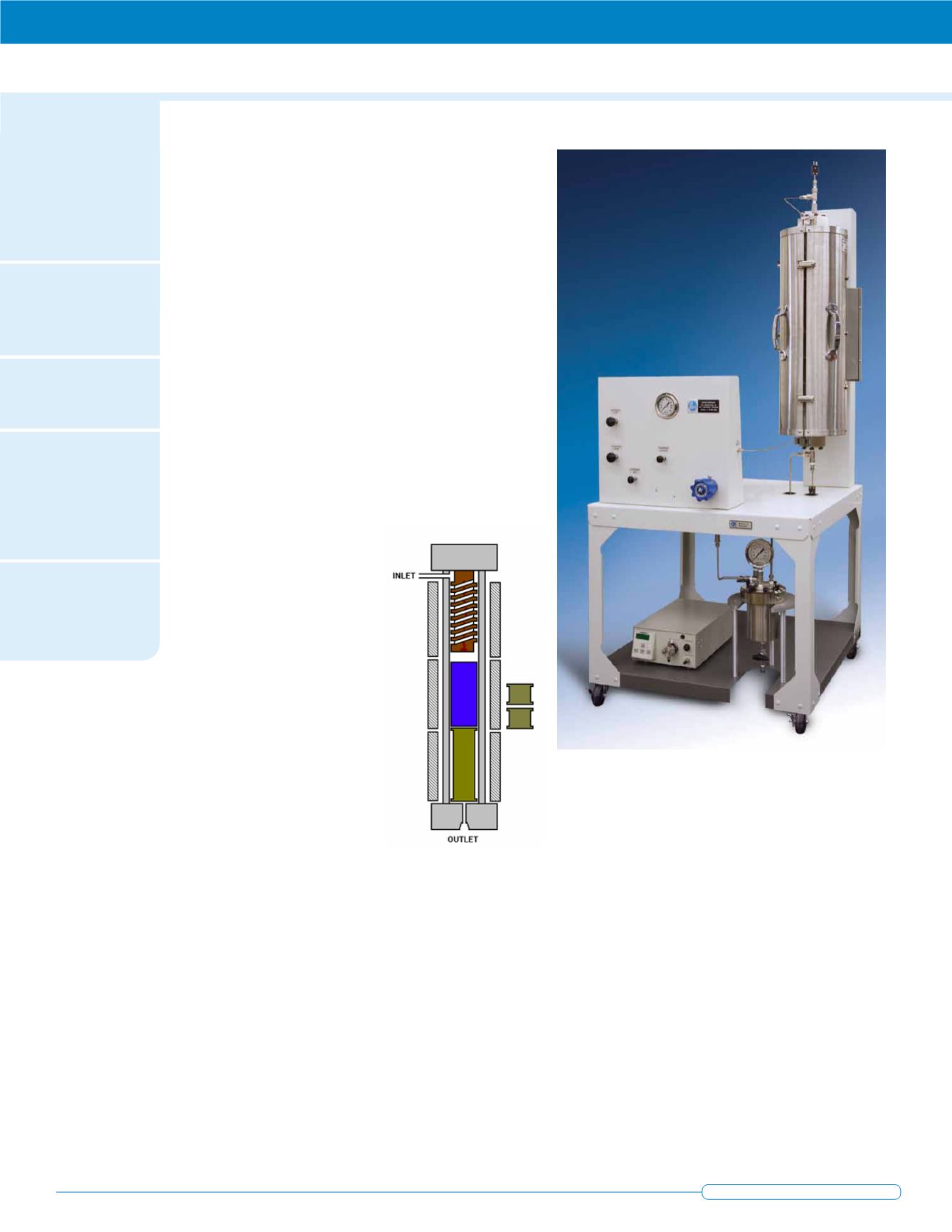
2
P a r r I n s t r u m e n t C o m p a n y
w w w . p a r r i n s t . c o m
Series 5400 Continuous Flow Tubular Reactors
Series Number:
5400
Type:
Bench Top, Cart,
or Floor Stand
Vessel Sizes, mL:
15 mL - 300 mL
Standard Pressure Rating
MAWP, psi (bar):
1500 (103),
3000 (207), or
5000 (345)
Maximum Operating
Temperature, °C:
350 or 550
T
ubular reactors are always used in a con-
tinuous flow mode with reagents flowing in
and products being removed. They can be the
simplest of all reactor designs. Tubular reactors
are often referred to by other names:
• Pipe reactors
• Packed-bed reactors
• Trickle-bed reactors
• Bubble-column reactors
• Ebulating-bed reactors
Single-phase flow in a tubular reactor can
be upward or downward. Two-phase flow can
be co-current up-flow, counter-current (liquid
down, gas up) or, most commonly, co-current
down-flow.
Tubular reactors can have a single wall and
be heated with an external furnace or they can
be jacketed for heating or cooling with a circu-
lating heat transfer fluid. External furnaces can
be rigid, split-tube heaters or be flexible mantle
heaters.
Tubular reactors are used
in a variety of industries:
• Petroleum
• Petrochemical
• Polymer
• Pharmaceutical
• Waste Treatment
• Specialty Chemical
• Alternative Energy
Tubular reactors are used
in a variety of applications:
• Carbonylation
• Dehydrogenation
• Hydrogenation
• Hydrocracking
• Hydroformulation
• Oxidative decomposition
• Partial oxidation
• Polymerization
• Reforming
Tubular reactors may be empty for homog-
enous reactions or packed with catalyst particles
for heterogeneous reactions. Packed reactors
require upper and lower supports to hold
particles in place. Uppermost packing is often of
inert material to serve as a pre-heat section. Pre-
heating can also be done with an internal spiral
channel to keep incoming reagents close to the
heated wall during entry, as shown above.
5402 Tubular Reactor System
It is often desirable to size a tubular reactor to
be large enough to fit 8 to 10 catalyst particles
across the diameter and be at least 40-50 particle
diameters long. The length to diameter ratio can
be varied to study the effect of catalyst load-
ing by equipping the reactor with “spools” to
change this ratio.
Temperature is typically controlled by thermo-
couples located on the outer wall of an externally
heated tubular reactor. A moveable internal
thermocouple is often employed to observe the
temperature changes occurring as the reaction
proceeds through the reactor.
Tubular reactor systems are highly customiz-
able and can be made to various lengths and
diameters and engineered for various pressures
and temperatures.
We provide a split-tube furnace for heating
these vessels. Insulation is provided at each end
so that the end caps are not heated to the same


